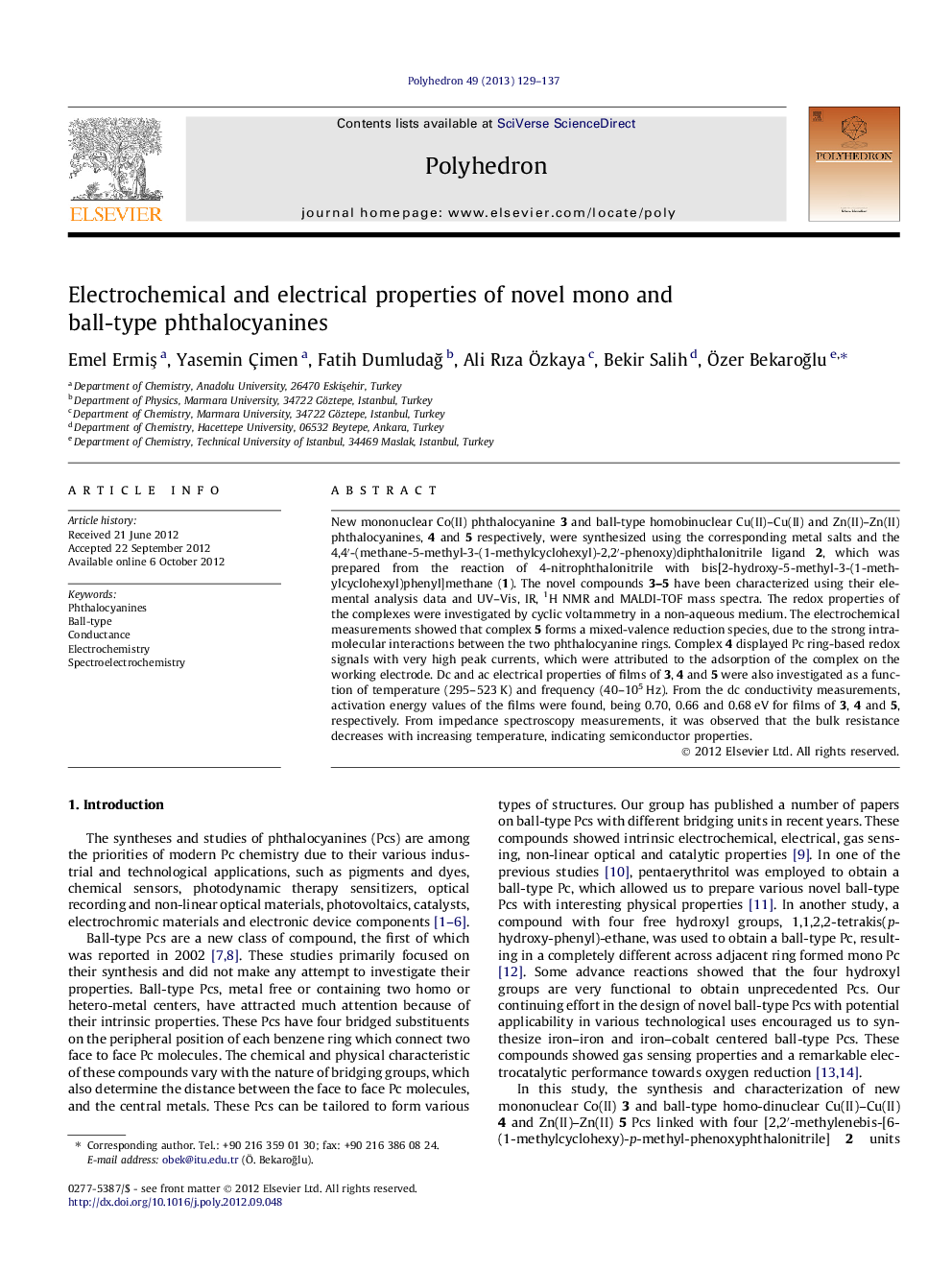| Article ID | Journal | Published Year | Pages | File Type |
|---|---|---|---|---|
| 1338597 | Polyhedron | 2013 | 9 Pages |
New mononuclear Co(II) phthalocyanine 3 and ball-type homobinuclear Cu(II)–Cu(II) and Zn(II)–Zn(II) phthalocyanines, 4 and 5 respectively, were synthesized using the corresponding metal salts and the 4,4′-(methane-5-methyl-3-(1-methylcyclohexyl)-2,2′-phenoxy)diphthalonitrile ligand 2, which was prepared from the reaction of 4-nitrophthalonitrile with bis[2-hydroxy-5-methyl-3-(1-methylcyclohexyl)phenyl]methane (1). The novel compounds 3–5 have been characterized using their elemental analysis data and UV–Vis, IR, 1H NMR and MALDI-TOF mass spectra. The redox properties of the complexes were investigated by cyclic voltammetry in a non-aqueous medium. The electrochemical measurements showed that complex 5 forms a mixed-valence reduction species, due to the strong intramolecular interactions between the two phthalocyanine rings. Complex 4 displayed Pc ring-based redox signals with very high peak currents, which were attributed to the adsorption of the complex on the working electrode. Dc and ac electrical properties of films of 3, 4 and 5 were also investigated as a function of temperature (295–523 K) and frequency (40–105 Hz). From the dc conductivity measurements, activation energy values of the films were found, being 0.70, 0.66 and 0.68 eV for films of 3, 4 and 5, respectively. From impedance spectroscopy measurements, it was observed that the bulk resistance decreases with increasing temperature, indicating semiconductor properties.
Graphical abstractNew mononuclear Co(II) and ball-type homobinuclear Cu(II)–Cu(II) and Zn(II)–Zn(II) phthalocyanines were synthesized using the corresponding metal salts and the 4,4′-(methane-5-methyl-3-(1-methylcyclohexyl)-2,2′-phenoxy)diphthalonitrile ligand. The electrochemical measurements showed that the ball-type Zn2Pc2 forms mixed-valence reduction species, due to strong intramolecular interactions between the two phthalocyanine units. From impedance spectroscopy measurements, it was observed that the bulk resistance of the complexes decreases with increasing temperature, indicating semiconductor properties.Figure optionsDownload full-size imageDownload as PowerPoint slide
